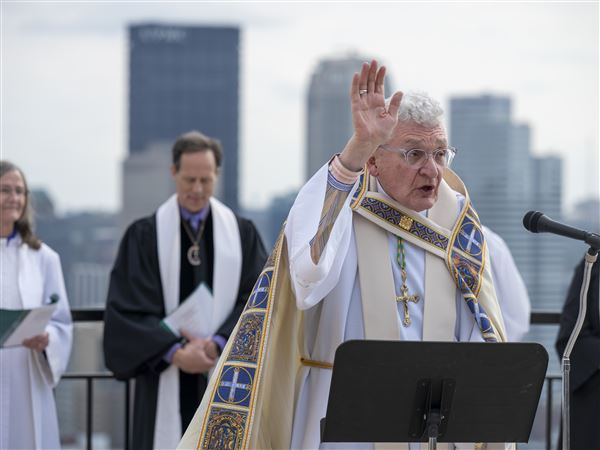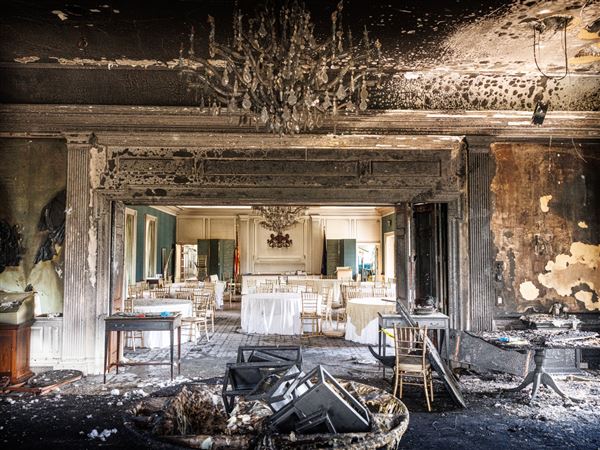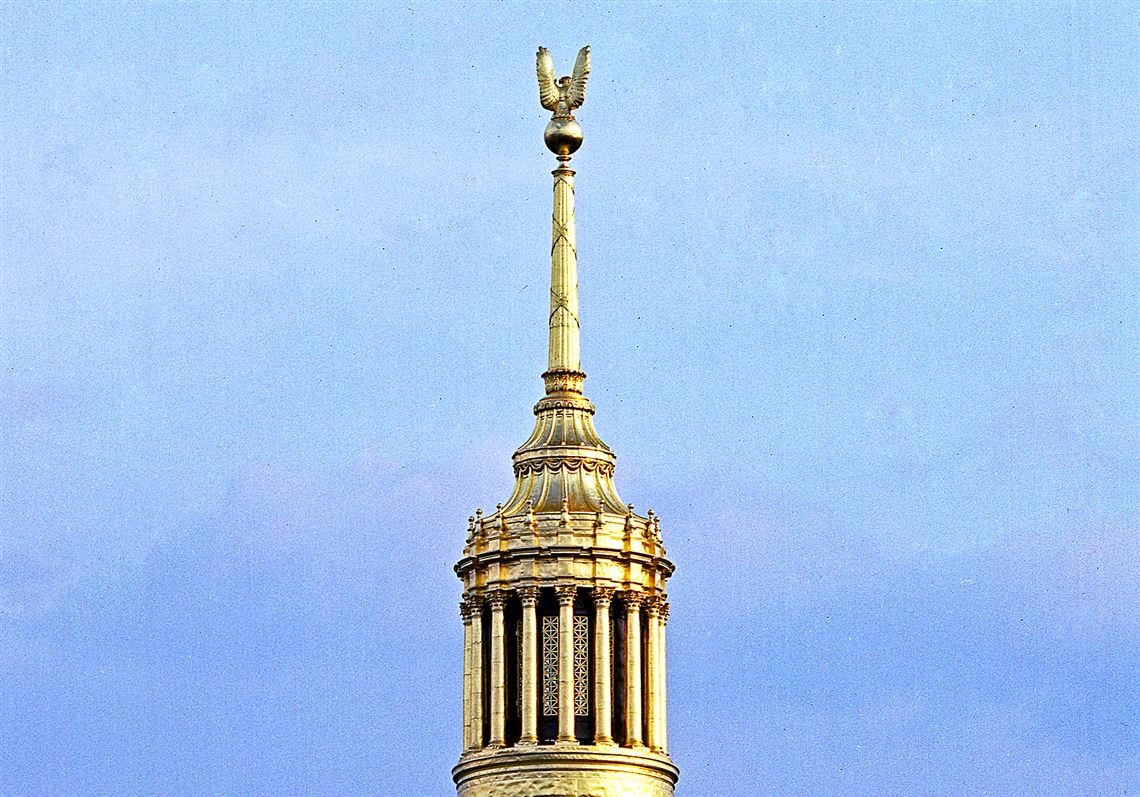A little more than 200 miles south of Pittsburgh the golden dome of the West Virginia Capitol in Charleston catches the eyes of residents as well as of the thousands of travelers passing through on the nearby interstate. “Cass Gilbert’s West Virginia State Capitol” tells the fascinating story of that grandiose building through the multitude of voices involved in its commission and completion.
Mr. Gilbert (1859-1934) was internationally recognized and one of the most sought after architects in America when he was appointed capitol architect in 1921. But that didn't guarantee him smooth sailing, and authors Ann Thomas Wilkins and husband David G. Wilkins lead the reader through the tribulations and triumphs of the project in a manner that blends storytelling with academic insight. The classically inspired building, deemed one of the architect’s greatest achievements, was dedicated in 1932.
This substantial book goes beyond standard historic chronology to paint a picture of a time and place, as one may expect from two of our most esteemed local scholars. Ms. Wilkins is retired associate professor of classics at Duquesne University, and Mr. Wilkins is professor emeritus of the History of Art and Architecture Department at the University of Pittsburgh.
Recognition must also be given to the publisher, West Virginia University Press, for design worthy of the authors’ efforts, and for the inclusion of copious chapter notes, an illustrated glossary of architectural terms, a bibliography and an index, the latter a candidate for the publishing endangered species list. All of these supplements are essential to ensuring the usefulness and the enduring value of any publication, whether placed on the shelves of a research or home library.
The Wilkins’ chapters are bookended by West Virginia University scholars Bernard Schultz and Mary L. Soldo Schultz, who contextualize Mr. Gilbert within architecture’s classical tradition, and Chad N. Proudfoot, who comments upon the capitol post-1932 from the vantage point of a former member of the West Virginia Capitol Building Commission, including the involvement of the late architect’s son, Cass Gilbert Jr., in capitol complex expansions.
Aside from the West Virginia Capitol, Mr. Gilbert is most noted for the U.S. Supreme Court Building in Washington, D.C., completed in 1935; the Woolworth Building in Manhattan, one of the earliest skyscrapers, completed in 1913; and the Minnesota State Capitol, which also sports a dome and was completed in 1905.
As the construction of Mr. Gilbert’s marble and bronze embellished building proceeded in Charleston, contemporary architects were turning away from the grand Neo-classical style, used often for Washington’s federal buildings, and toward Modernism with its sleek lines and practical materials. For that reason, the West Virginia Capitol has received less attention than the authors argue it deserves. With the re-evaluation afforded by time, Mr. Gilbert’s functional monument to the mountain state has received renewed recognition as a restrained but dignified building that epitomizes Jeffersonian notions of promoting national values through inspiring architecture.
I particularly enjoyed the chapter on the capitol’s pervasive symbolism, from architectural form referential of Greek temples and of the U.S. Capitol, with implications of association with their noble aspirations, to the carved heads of mythological divinities representing such attributes as wisdom or elements as commerce, to the gilded military and patriotic motifs on the dome.
All of this is made more immediate by a profusion of illustrations ranging from a moody capitol fronted by fog rising from the Kanawha River to an archival photograph of houses on risers being moved by barge across the river to clear the capitol site, from architectural drawings to photographs of the construction. Several colored period postcards from the authors’ collection, of this and other state capitols, are charming as well as informative, and illustrate the breadth of knowledge that only decades of interest and curiosity can develop.
Mr. Gilbert was a gift as a subject because he made, and kept, extensive documentation of both his professional and private lives. The Wilkins say that few American buildings can be better documented, while acknowledging there is more to learn about public viewpoints of the time and perhaps even to be discovered about Mr. Gilbert.
That said, there is much to be gleaned from this comprehensive volume that just may inspire a day trip for some readers.
“Cass Gilbert’s West Virginia State Capitol” by Ann Thomas Wilkins and David G. Wilkins, West Virginia University Press, 368 pages, 114 photographs, cloth, $44.99.
Post-Gazette art critic Mary Thomas: mthomas@post-gazette.com or 412-263-1925.
First Published: December 10, 2014, 5:00 a.m.
















